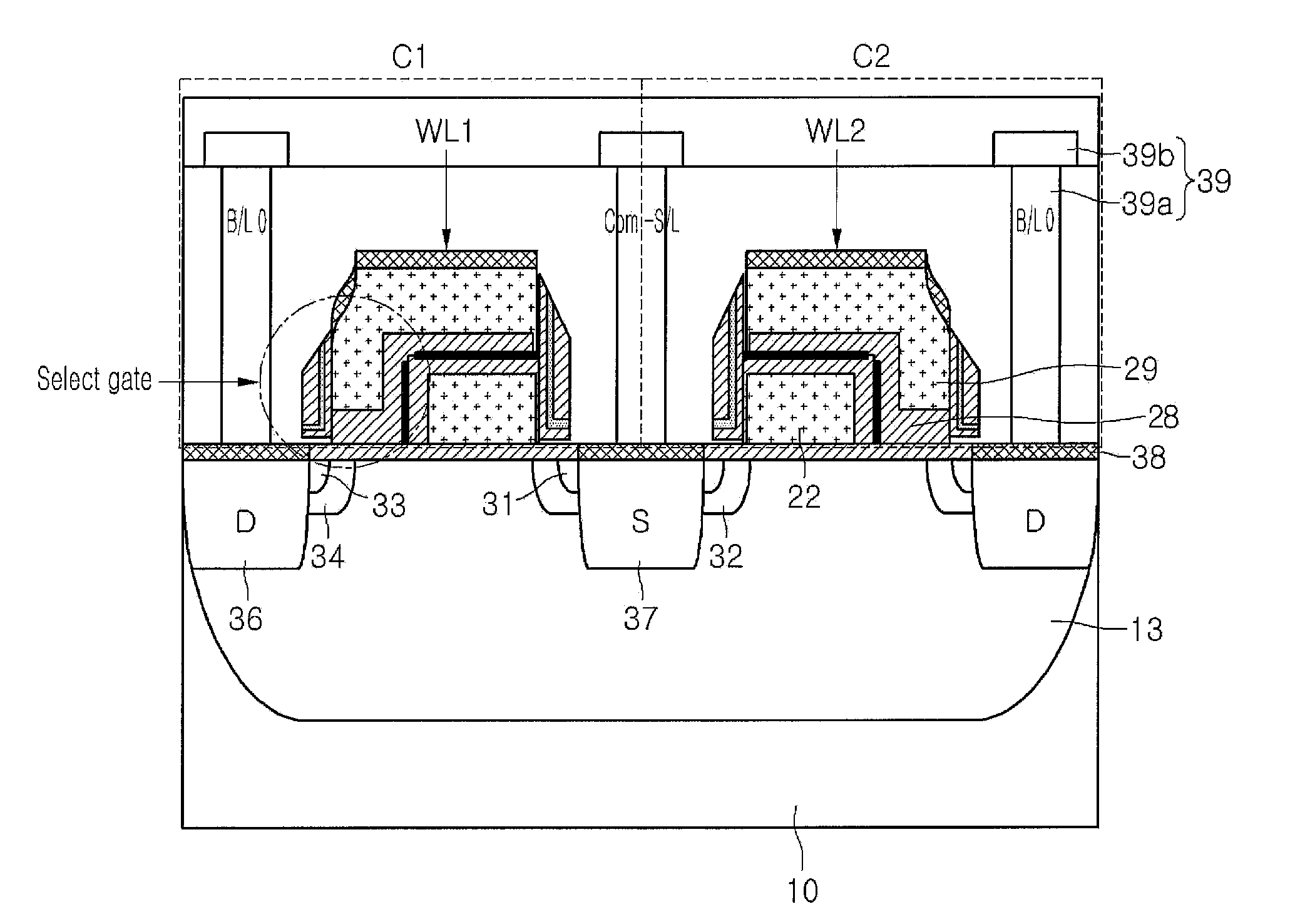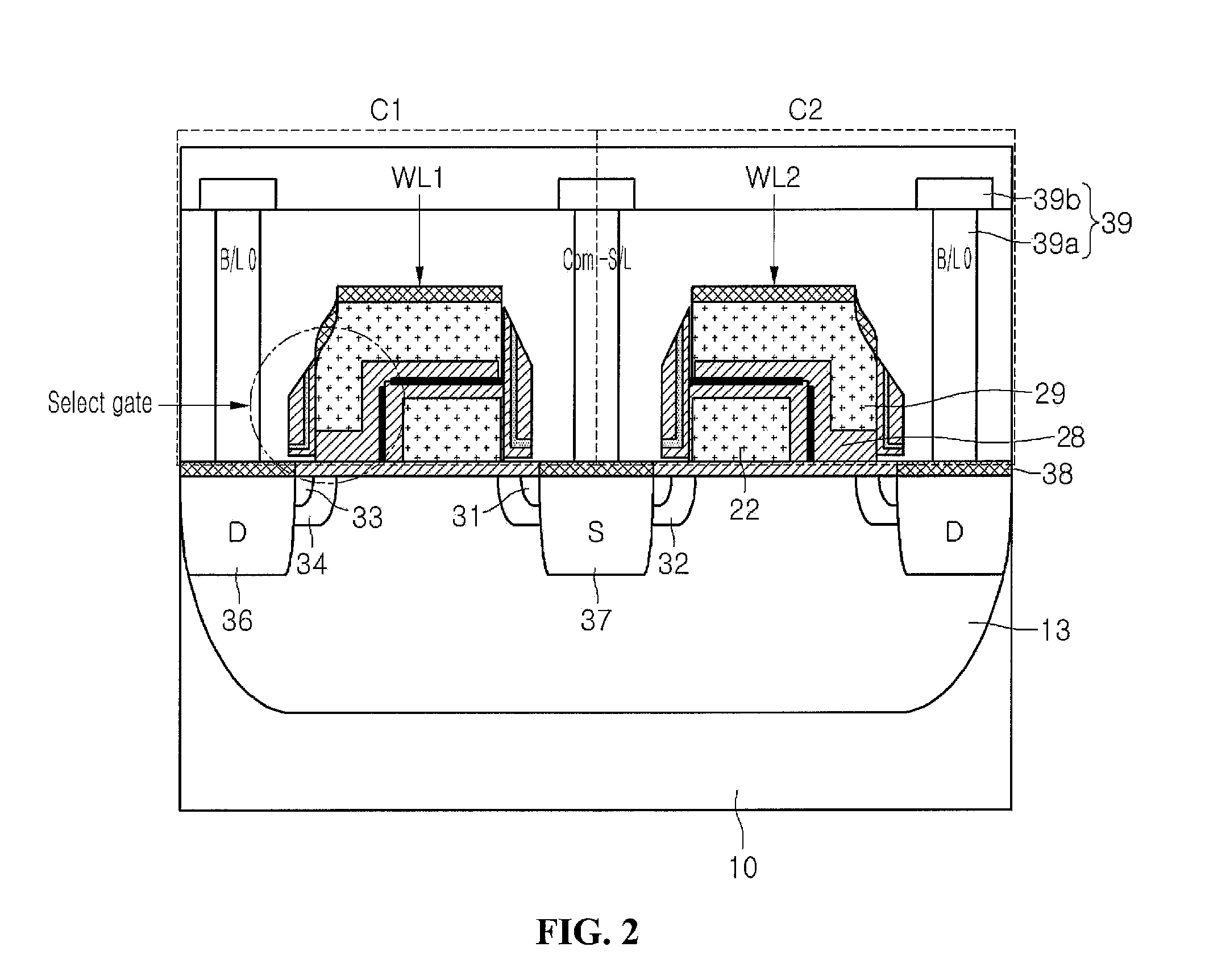Flash memory device and manufacturing method of the same
a technology of flash memory and manufacturing method, which is applied in the direction of semiconductor devices, basic electric elements, electrical apparatus, etc., can solve the problems of unsuitable mobile product recovery operation, unnecessarily required recovery operation, and inability to meet the requirements of mobile product storage, etc., to achieve the effect of reducing the number of high voltage devices, and reducing the area of the peripheral region
- Summary
- Abstract
- Description
- Claims
- Application Information
AI Technical Summary
Benefits of technology
Problems solved by technology
Method used
Image
Examples
first embodiment
[0032]Hereinafter, the operation of the flash memory device will be described with reference to FIGS. 2 and 3A to 3C, and Table 1. FIG. 2 shows a cross-sectional view through line A-A′ of FIG. 3A in accordance with an embodiment of the invention. As illustrated by the schematic diagram of FIG. 3A, each cell includes the two transistor configuration of select gate and floating gate, and the cells are configured in pairs of adjacent cells. The small size can be accomplished by using the split select gate and floating gate configuration of embodiments of the invention to provide the adjacent cell pairs.
[0033]A sector is defined by using divided high voltage p-wells (HPWs). The HPWs are isolated from each other by deep n-wells (DNWs). Each HPW can be applied with a signal IPW0> to IPW. For one embodiment, such as shown in FIG. 3A, a plurality of cells across multiple bit lines and multiple word lines can be included in one sector. Therefore, as described in more detail below, erase ope...
second embodiment
[0043]Hereinafter, the operation of the flash memory device will be described with reference to FIGS. 2 and 4A to 4C, and Table 2.
[0044]FIG. 2 can represent a cross-sectional view through line A-A′ of FIG. 4A in accordance with an embodiment of the invention. As illustrated by the schematic diagram of FIG. 4A, each cell includes the two transistor configuration of select gate and floating gate, and the cells are configured in pairs of adjacent cells. The small size can be accomplished by using the split select gate and floating gate configuration of embodiments of the invention to provide the adjacent cell pairs.
[0045]A sector is defined by using divided HPWs. The HPWs are isolated from each other by DNWs. Each HPW can be applied with a signal IPW0> to IPW. For one embodiment, such as shown in FIG. 4A, a plurality of cells across multiple word lines can be included in one sector. This can be accomplished using isolated HPWs that are prepared perpendicularly to the word lines W / L. F...
PUM
 Login to View More
Login to View More Abstract
Description
Claims
Application Information
 Login to View More
Login to View More - R&D
- Intellectual Property
- Life Sciences
- Materials
- Tech Scout
- Unparalleled Data Quality
- Higher Quality Content
- 60% Fewer Hallucinations
Browse by: Latest US Patents, China's latest patents, Technical Efficacy Thesaurus, Application Domain, Technology Topic, Popular Technical Reports.
© 2025 PatSnap. All rights reserved.Legal|Privacy policy|Modern Slavery Act Transparency Statement|Sitemap|About US| Contact US: help@patsnap.com



